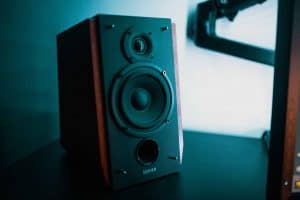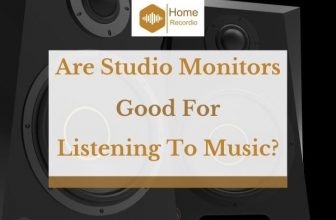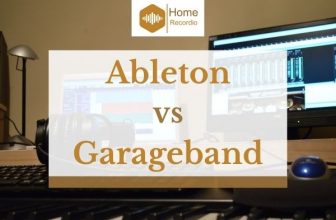Can You Use Studio Monitors For Regular Speakers?
If you are into the music business or like hanging out with audio enthusiasts, chances are, you have got a taste of what a studio monitor sounds like.
I can bet the first time you laid your hands on a studio monitor; you couldn’t help but wonder whether they can be used to listen to your favorite jam at home.
Echoing the most probable question you had at that very moment.
can you use studio monitors for regular speakers? Of course, you can! Studio monitors are not just for studio work; you can use them to enjoy your music with quality and clarity that’s far beyond any regular top-of-the-line home stereo speakers.
This article is written in a simple manner, using the simplest language to ensure that you totally understand the difference between regular speakers and the studio monitors.
By the end of the article, you will be well informed to determine if choosing a pair of studio monitors are a worthy investment.
Table of Contents
Let’s begin with the basics
Unlike regular speakers, monitor speakers are not simply built to look and sound good with an exaggerated bass for cheap batch manufacturing.
Monitors are particularly designed to people whose quality of the playback audio is an essential factor. For this reason, you will always find studio monitors with music producers and other audio professionals.
When crafting high-quality studio beats, a recording professional will always depend on the precision and clarity of the monitors to produce a mix that can be played in any system.
How Do Studio Monitors And Regular Speakers Differ?

The primary difference between the two types of playback speakers is the sound profile of the audio they produce.
Studio monitors are built to reproduce every bit of audio signals with a flat frequency response across the full spectrum without any distortion or variations when playing at any volume.
For this reason, studio monitors are designed with total harmonic distortion that’s as close to zero as possible.
Unlike regular speakers that are designed to tweak and enhance middle and high frequencies as well as the bass levels to produce punchy audios, studio monitors do not amplify their sound on particular frequencies, they consistently respond accurately to all frequencies at any volumes.
The flat signal response allows listeners to listen critically on how every element of music sound at different volumes. To achieve such precision, it takes quality components and cutting-edge sound engineering to make the signals remain flat.
And this makes the biggest difference between the two types of speakers that reflect on all other features—including the price difference.
Regular speakers are manufactured to respond to the market demands. For instance, if the majority of songs created are tailored to be played in clubs where the enhanced bass and loud sound drives the masses, regular speakers are “colored” to produce elevated bass and sound.
That said. These differences are not always apparent visually, which makes choosing between the two a bit tricky. Try to consider the purpose, usage, and what’s really important to you before buying either.
How Do Studio Monitors Work?
Video: “Studio Monitor Basics: Speaker Types, Sizes, & Acoustics – Explained”
Studio monitors are designed to utilize their own power source. Unlike regular speakers that draw only a small amount of power from the source of the sound (from the receiver or amplifier), studio monitors are active in nature and draw current from the main power supply.
When fully powered, they utilize a wide array of amplifiers for each frequency from the sources. This way, each woofer, tweeter, and the mid-range speaker will each be dedicated to a particular amplifier.
All this engineering is in order to produce each note and tone more precisely. As a result, the output sound will be accurate as there will be no power interferences.
On the other hand, regular speakers are passive in nature as they draw current from the amplifiers, which do all the job of producing all notes and tones across all ranges.
With regular speakers, tolerance is not one of the key design factors. This is the opposite when it comes to studio audios.
They are manufactured with tighter tolerance for greater detail audios. This feature helps sound engineers to detect any imperfect note and unwanted sounds and digitally correct such defect. This could not be possible with regular speakers
What Will You Hear While Listening to Studio Monitors?

When it comes to the projection of the sound, you will hear nothing but quality sound just the way it was produced in the studio.
While regular speakers are designed to produce “colored” and projected sound throughout a room, studio speakers are useful when listening to authentic music quality as they prevent any outside disturbances, such as distance and the size of the rooms, from interfering with each sound’s true frequency.
As for the sound difference, modern manufacturers of regular speakers have used considerable resources to make near perfect speakers, which enriches the quality of the sound produced while enhancing particular frequencies and bass levels.
On the other hand, studio monitors are designed to prioritize flat-response. Instead of enhancing the system’s sound, they focus on maintaining the system’s “true” frequencies at any sound level.
What Are Studio Monitor Commonly Used for?

Just like regular home speakers, studio monitors come in an array of sizes. They are all designed to deliver true music/audio experience to the listeners.
Below are common uses of studio monitors.
In Recording Studio
Years back, studio monitors were only used with sound engineers at the recording studios. A number of them were strategically placed in the recording room to support a wide range of sound frequencies.
With the help of studio monitors, record artists and producers could detect and correct any flaw in tone or note.
They could also mix new sound varieties with the music reproduced with these monitors. This is still happening in modern recording studios.
In-Home Theaters
Studio monitors are best for listening to your favorite music collection or even watch films with your home theater. With a few studio monitors placed across the theater, you will enjoy the quality and detailed sound experience.
For Video Gaming
Using studio monitors when video gaming has become very popular. The monitors capture and reproduce the true quality of the game, especially if the gamer is sited next to the monitor.
If you want to be at a distance, spreading out several monitors in the room will help further enhance the quality of the games.
In Teleconferencing and Meeting Rooms
To make the meetings have the feeling that the members are conversing from the same room, you need to capture the true voices of each member.
Likewise, nothing does a better job than replacing regular speakers with studio monitors when it comes to projecting the true sound of the speakers.
A Summary Of The Difference Between Regular Speakers And Studio Monitors
- Regular speakers are a passive sound system that, more often than not, depend on another piece of audio devices to replace sound.
On the other hand, studio monitors operate on actives systems that draw power directly from the mains, which means that component needed to reproduce quality sound is inbuilt. - Studio monitors have a wide range of better and state-of-the-art features. For instance, they have built-in features that enable the monitors to adapt better to varying reference sources.
Also, while regular speakers have only wired options, studio monitors come with advanced connectivity options. - Contrary to what most people assume, it’s apparent that studio monitors are just designed to be used by producers and artists in recording studios. Studio monitors can be used in almost any setup.
You can use them in your living room, bedroom, cars, at the theater, etc. As a matter of fact, monitors can replace regular speakers when the audience is looking forward to enjoying quality music in regular joints. - One common feature with studio monitors is less clustering; Given that studio monitors are designed as a complete package with all inbuilt components, the layout of a studio monitor is usually less clustered-
often with one or two cabinets and a remote. On the contrary, regular speakers may need several pieces, which ranges between six to nine devices that need to be wired together across the room. - When it comes to ease of installation, studio monitors have sleek plug-and-play designs. Regular sound systems will, on the other hand, require every component to be interconnected using different wires, which needs time and attention.
Wrapping Up
The high prices of studio monitors are a reflection of the exceptional sound quality, superior materials, and cutting-edge sounding engineering used to produce them.
Although they were initially used in recording studios, they have become a popular choice even to the untrained ear. They are often simple to understand and easy to use, which makes them a perfect option for home and theater setup.
So, can you use the monitors for regular speakers? Yes, you can. The difference in the quality of the component and the sound output makes them a better option to anyone who’s looking forward to enjoying quality music in a quality sound system.
The awesome audio experience from the monitors makes them a worthy investment as part of your entertainment system. If you choose to install one today, you will never go back to regular speakers.




